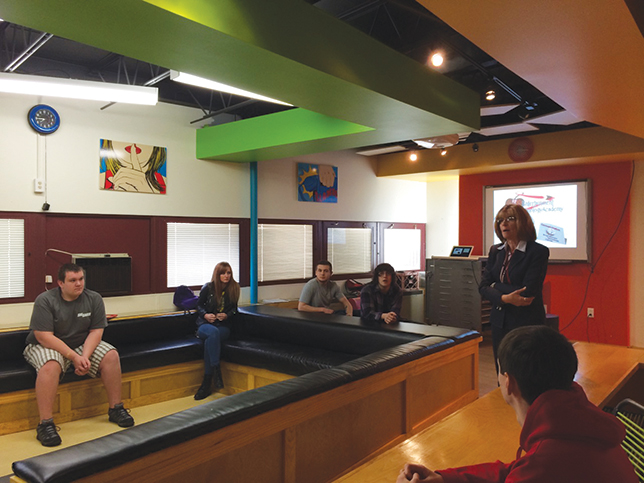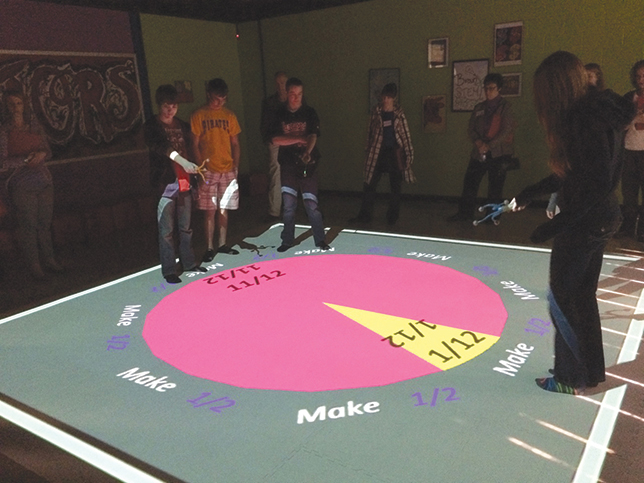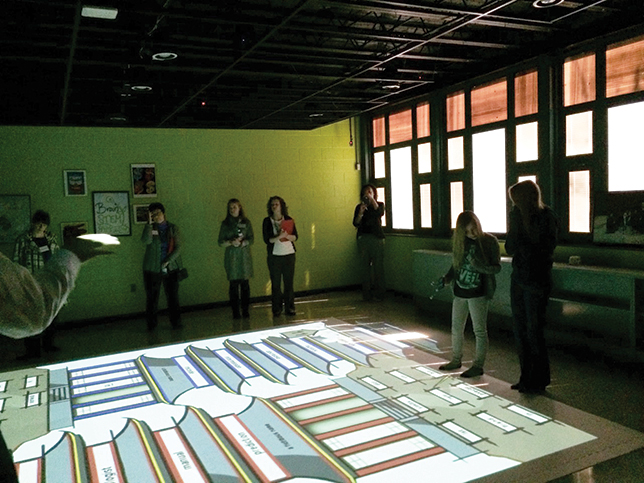7 Proven Strategies for Winning Ed Tech Grants
In the fierce competition for funding, here's how you can make your application rise to the top.
- By John K. Waters
- 03/26/15
In this era of limited budgets, K-12 educators looking to add technology to their classrooms often have to find creative ways to pay for their projects. Fortunately, there has never been a wider range of ed tech funding sources. Joining the lineup of traditional federal, state and private foundation grants is a new generation of donor programs and contests. "Writing a grant" today can mean anything from stating your case in a Word document to producing a video or making a direct pitch on a Web site. Whatever the medium, it's how you tell your story that sets you apart from the competition. Whether you're writing a traditional grant, entering a contest or reaching out online to a potential benefactor, you'll increase your chances of success by applying these seven strategies.
Start with Your Need
Because they can get funding for telecom and infrastructure through E-rate, educators write ed tech grants primarily for end-user equipment. So you might be tempted to start your grant proposal talking about the tech, but that would be a mistake, said Alice E. Owen, executive director of the Texas K-12 CTO Council, the state chapter of CoSN that supports school district chief technology officers. Always begin your story, Owen said, with your need.
"Look at your community," she said. "Maybe there's a high rate of poverty in your district and the kids are not achieving. Maybe you have a large number of non-English speaking students who are not doing well. You can get together with your colleagues and brainstorm a list, and then pick one that you feel very attached to. That's where you focus first."
Owen, a sometime trainer, is a former principal, staff development director and technology director. More importantly, she's a savvy veteran of the grant-writing wars. During her time as executive director of technology at Irving Independent School Districtin Texas, she led grant projects that secured $3 million to $4 million dollars for her district.
Once you've identified your community's need, Owen said, make a list of the barriers this problem creates for your students. Then explain how the technology you're asking for will help them to overcome those barriers.
"It's truly in your best interest to make this need you've identified seem very dire and very sad," she said. "You are competing for this money, so your need has to seem greater than someone else's. You want it to be clearly understood that, if you don't get this help, your kids are going to continue to do worse and not achieve."
Keep the Students Front and Center
Always remember: You don't need this technology; your students do. Talk about their problems. Maybe you have kids in your district who reach high school and then have no clue what they want to do when they graduate. Maybe you have a high dropout rate or graduates who are floundering. Maybe your ninth-graders desperately need support to improve their algebra scores. According to Owen, "You can always find a need and way to tie it to the progress of students' current performance or future careers, but the technology always comes in as a support resource, not as the main objective of the grant." In short, put your students first in your narrative and keep the focus on them.

Mathematics teacher Mary Wilson talks to students about the
Situated Multimedia Arts Learning Lab (SMALLab) in Elizabeth
Forward Middle School. The lab was equipped using funds from a
$20,000 grant to the district from the Allegheny Intermediate Unit.
Students were literally in the spotlight for the Compass Learning Classroom Refresh Contest. The applications for this grant took the form of student-and-teacher-produced music videos that aimed to demonstrate how technology could enhance classroom instruction. Grants of $185,000 worth of personalized learning software, hardware and professional development packages from Compass Learning and other vendors were awarded to individual classrooms in grades K-5, 6-8 and 9-12.
Eileen Shihadeh, vice president at Compass Learning, said, "We were looking for folks who were very motivated. The fact that they were willing to put the sweat equity into making these videos was strong evidence of the buy-in, both of the students and the teachers, which we felt was essential. But to be honest, it was always the students who sold it."
It's not all about sad-eyed kids asking for help, though. Shihadeh counseled, "You really want to think about what your vision is for how technology can enhance your teaching and learning. Get that vision focused, and then express it in the video. Really put your heart into it. The combination of those two things — a thoughtful vision about what you're trying to achieve (and what you believe technology will help you achieve) with a heart-felt appeal — is a recipe for success."
Don't Go It Alone
One way to make your application more appealing is to partner with other organizations: other school districts, a local university, a public library or a local business. Also consider a local community college or private charities that work in your community. This team approach is especially useful if you are trying for a large federal grant, Owen said. "The federal government likes to see partnerships. There can be a lot of money at stake, so they're definitely looking for a broader coalition in a community. This is a key to winning federal grants."
She added,"Look around your community for anyone who might help, keeping in mind that their part in the grant project doesn't need to be very big. Maybe they're just lending the project their name or their expertise, or they're just there to help disseminate the information after the project is over."

Elizabeth Forward Middle School students engage in "embodied
learning" by using wands to interact physically with images projected
onto a floor mat by a short-throw projector. Subjects range
from language arts to mathematics.
Smaller districts interested in federal grants almost certainly have to partner with larger districts. But they don't have to come to the project hat in hand. Not only do they add to the overall number of coalition members, which plays to the fed's preference, they're often needier than the larger districts, which makes the overall package more appealing. To put it bluntly, Owen said, "If you're a wealthier school district, there are definite advantages to partnering with a smaller district with greater needs."
Choose a Memorable Name and Graphic
When you reach out for classroom technology grants, you're not selling laundry detergent or breakfast cereal, but you are selling, and you have a great chance of making a sale when the product has a compelling brand. Owen advised, "Naming your project provides a hook and a quick way for people to understand what it's all about." And, she added, "If you can marry that name with something visual, even better."
One example Owen pointed to is the STAR Project, which she helmed during her time at Irving ISD. First implemented in 1995, STAR's objective was to get veteran teachers to use technology to benefit students, and then to mentor new teachers to use it. The project connected students, teachers and parents with staff development. The visual element, not surprisingly, was a star, each point of which represented one of the stakeholder groups who were there to support the students. "We felt that the graphic helped to present a good visual that kind of boiled down what the project was all about," Owen said. "I think it worked, because we won that grant and several more."
If you're working on an atypical grant application — say, a video — this kind of aesthetic consideration becomes even more important. When judging the Classroom Refresh contestants, Shihadeh said, "The overall quality of the videos was definitely something we looked for. The technology for producing video is so accessible now to students that it really shouldn't be a problem."
Just like in the classroom, though, the tech itself is less important than how it is used. Shihadeh emphasized "the creativity and spirit of the students and teachers, and the way they expressed how this technology would enrich the classroom and enhance personalized learning."
Start Small To Win Big
As the saying goes, nothing succeeds like success. The people and organizations that provide ed tech grants want to know that their money will be well spent. Providing them with evidence that the grants you have won in the past were effective is a powerful argument for giving you another one.
Todd E. Keruskin, assistant superintendent at the Elizabeth Forward School District in rural Pennsylvania, uses an "all of the above" strategy when it comes to winning funding. "We go after every single grant," he said. "If it's a $1,000 grant, nine times out of ten, we're going to go after it. In fact, we just got another grant last week from an organization in Pittsburgh for $1,000, and we're going to use it to reach out and open our [fabrication] lab to our community free of charge. People see that we have success with these little grants and they're more likely to give us a bigger one."
If it doesn't seem worth it to spend your time and energy writing a grant for a couple of thousand bucks, Owen added, you should think of such a project as a starter grant that lets you flesh out your idea. From there, you can think bigger. Irving's STAR Project, for example, began as a $1,500 grant. A year later, Owen used the same concept to apply for a state grant and won $250,000.

Elizabeth Forward Middle School students play a language arts
game called Prefix Pagoda in the SMALLab. The game software
runs on a PC, and motion-capture cameras installed around the
room pick up reflections from the wands.
To build your reputation as a worthy grantee, you need to provide an evaluation of your project. Any large grant is probably going to require it, but it's in your best interest to plan for an evaluation of even a small project, Keurskin said. "It can be something as simple as a pre-survey/post-survey," he said, "but you need to show that you did what you said you were going to do and that you had a positive impact. That's critical to getting the next grant."
Keruskin helped Elizabeth Forward win hundreds of thousands of dollars in educational technology grants over a three-year period during which the district transformed the high school and middle school into cutting-edge learning centers and began offering computer programming classes at the elementary level. His personal tip for success: Once you've completed the project, don't forget to follow up with the funders. The district has posted at least half a dozen videos on YouTube, but Keruskin goes beyond that.
"We have kindergarten kids 3D printing," he said. "We send pictures of that to the funders out there. We invite them to the grand openings. We send them data, even if they don't require us to. The people who are funding and giving away their money want to see that it was worth it. We make sure they do."
Learn From Previous Winners
While you definitely want your application to stand out, you don't need to reinvent the wheel. Once a grant is awarded, it goes into the public records. Consequently, you should be able to find plenty of examples of funded grants in nearly every form online. (For example, you can watch the winning videos from the Classroom Refresh contest on YouTube.) Look at what successful applicants have done, and use their strategies or ideas to help you present your own ideas.
Another way to get a broad perspective on what other districts are doing is to volunteer to read grants. Granting institutions often want two or three set of eyes on the applications they consider. Readers rank them based on a rubric the institutions provide, and the grantors then weigh the scores from the different readers as they consider which proposals to approve. Often, especially at the state level, granting institutions ask for volunteer readers from the district.
"Early on, I volunteered to read a lot of grants," Owen said. "It's a great way to learn how to write them. You have to evaluate them and score them, so you have to read them closely. You can't help but pick up a lot."
Hire a Grant Writer
It may seem counterintuitive to advise budget-strapped districts to invest in a professional grant writer, but putting together hundreds of pages of paperwork for a large project can be time-consuming and resource-intensive. To give themselves a leg up in the fierce competition for ed tech dollars, Owen said, "Districts hire professional grant writers because, in the long run, they're worth it. They do the research, compile the relevant data and shape the grant application into a competitive document."
According to Owen, adding a writer to your staff is an investment that can pay enormous dividends. "I'm not exaggerating when I say that they can earn their salary 10 times over," she said.
About the Author
John K. Waters is a freelance journalist and author based in Mountain View, CA.